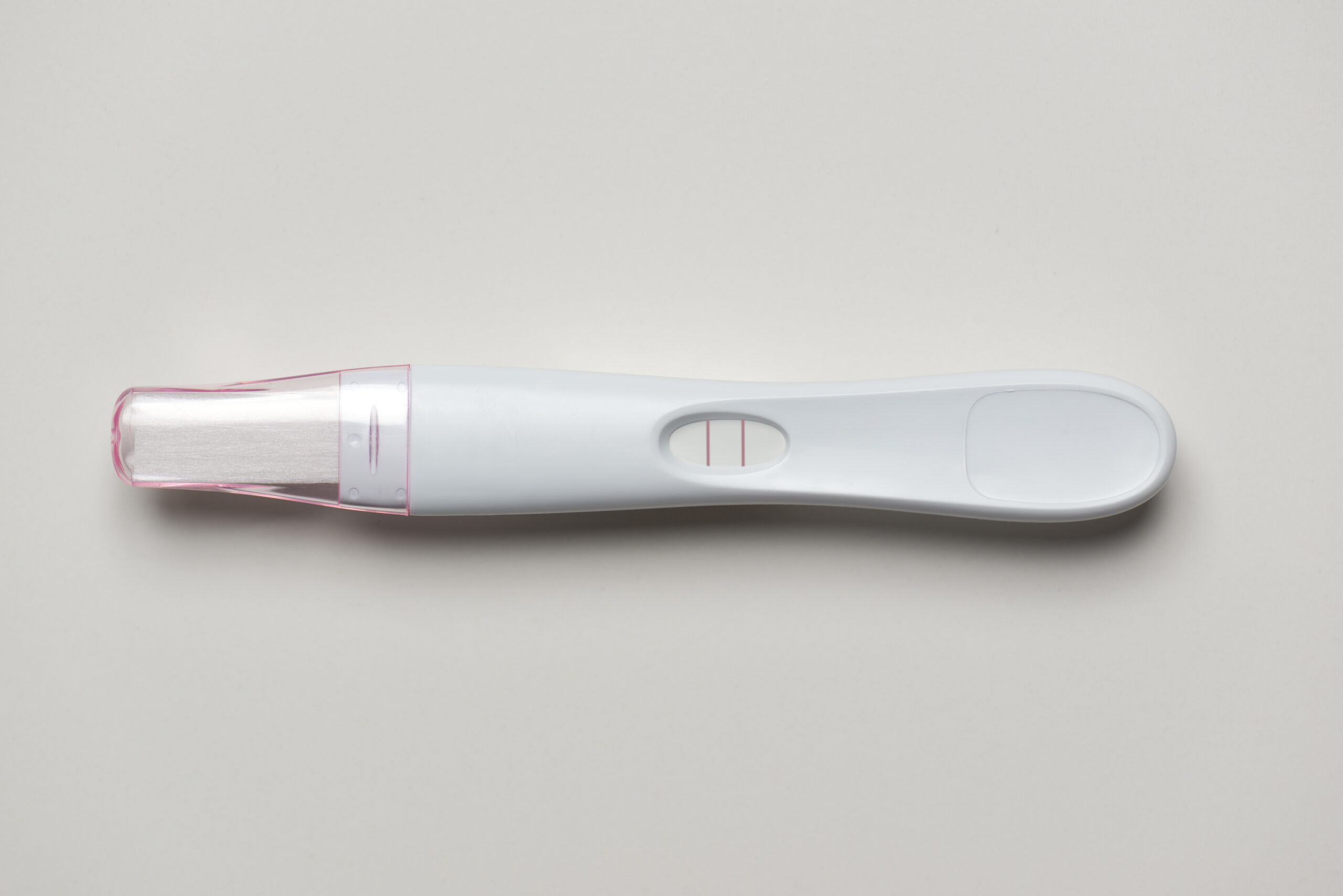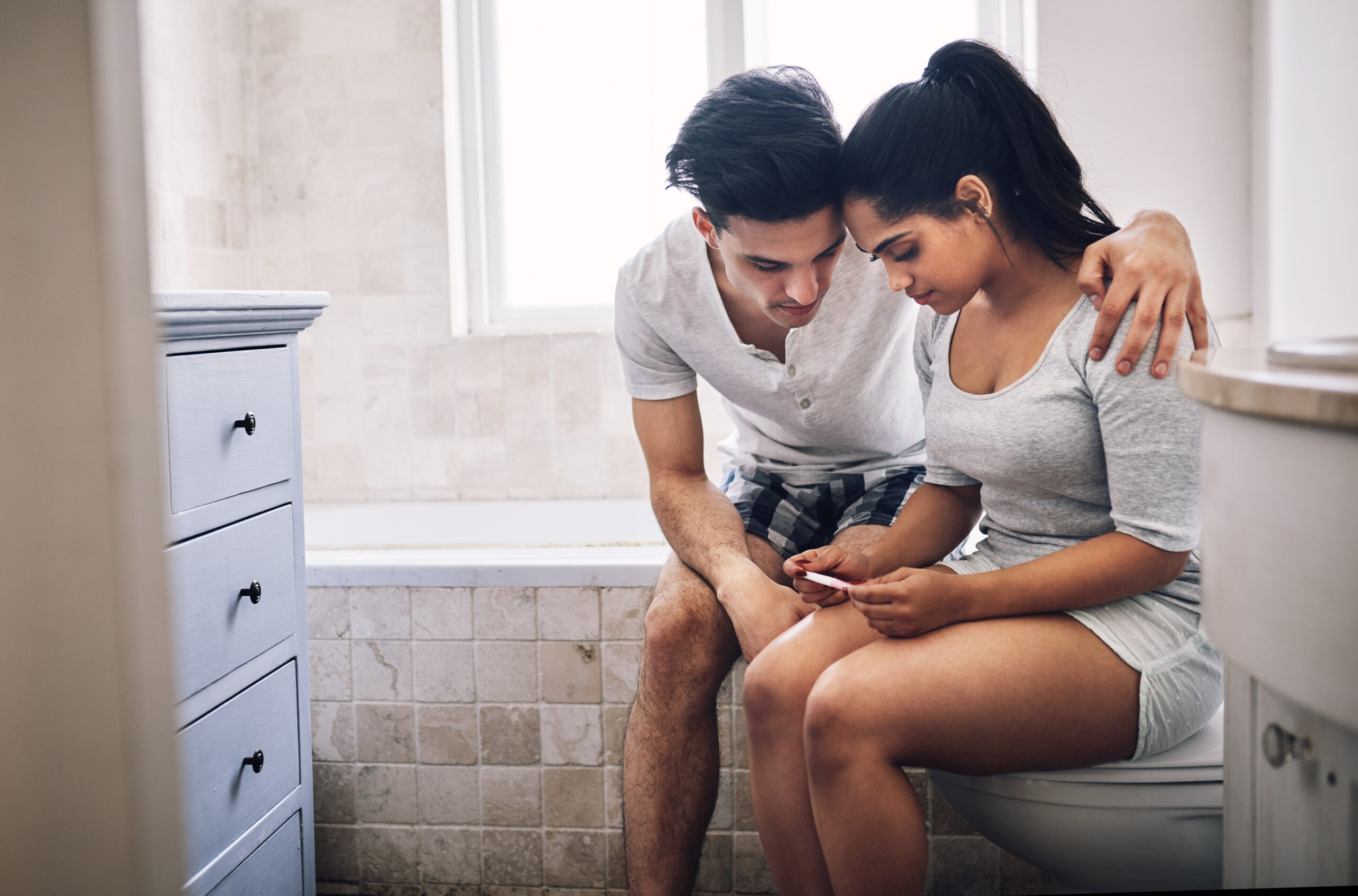It’s that woman's intuition that first tips you off that you might be pregnant — just a feeling. But then some physical signs of pregnancy manifest: You may have tender, swollen breasts but since that happens every month as you’re PMS’ing, you don’t think much of it. Then there’s the nausea that pops up every time you smell eggs, which has always been your favorite for breakfast. Oh, and you’ve been great about upping your water intake (so of course you’re peeing more), but lately your trips to the bathroom have quadrupled. And finally, a week or more has passed without the start of an expected menstrual cycle. You might be pregnant.
Even with all of these signs pointing towards the obvious, it’s still not 100% definite that you’re pregnant, so It’s a great time for an at-home pregnancy test. You can order pregnancy tests online or head to your local drugstore.
Timing is everything when taking a pregnancy test.

The decision to take a pregnancy test can be a major source of anxiety for some women. Whether you’re anxious because you do want to be pregnant — or you don’t want to be — the timing of taking the test is important. For the most accurate result, it’s suggested that you wait to take a pregnancy test until the week after your missed period. Taking a test too early may give you a negative result, even if you are pregnant. According to Planned Parenthood, most tests are 99% effective if taken after a missed period. If you don't want to wait until you've missed your period, you should wait at least one to two weeks after you had sex.
All pregnancy tests are the same, but do choose wisely.

According to experts, all home pregnancy tests work the same — yes, even the ones you’ll find at the dollar store! They detect a level of the pregnancy hormone called hCG — human chorionic gonadotropin — in your urine. The hCG hormone is only present if you’re pregnant. The hormone is only released if a fertilized egg attaches outside the uterus or to your uterine lining. Most pregnancy tests that are on the market are going to pick up the same amount of hormone at the same point in time.
That being said, the more expensive home pregnancy tests are designed to give you faster results or they’re easier to read. There are some advantages to paying a little extra — the tests average around $7 to $10 for one, but can go as high as $23, depending on the brand — if you need a quick answer or think you might struggle to read the test results. Sometimes you can get a free pregnancy test at certain health centers. You can also get a pregnancy test from your nurse or doctor, community clinic, or local health center (just make sure it’s a reputable and safe one).
If you’ve had a home pregnancy test in your medicine cabinet at home for more than a few months, make sure the date on it hasn’t passed because all home pregnancy tests have expiration dates. These dates are typically stamped on the box the tests come in as well as the individual wrapping of each test. So if you find a stray test in your cabinet without its box, you’ll still be able to find when it expires — or expired.
Taking a home pregnancy test can be done a few ways.

The best part of taking a home pregnancy test is that you can do it in the privacy of your home. There are a few pro tips to know before you take an at-home pregnancy test:
- Read the directions included with the test thoroughly before starting the test, and then follow every step precisely.
- Use your first morning urine when possible. This is when hCG levels are most easily detected. Otherwise, make sure the urine has been in your bladder for at least four hours.
- Do not drink excessive amounts of fluids before the test. You don’t need more pee, you need undiluted pee with accurate hCG levels.
Once you’re ready to take the test, it’s pretty much like collecting a urine sample during your gynecologist visits. Depending on the test you choose, you may have to collect your urine in a cup and dip a testing stick into the liquid, or collect your urine in a cup and use an eyedropper to move a small amount of fluid into a special container. Some home pregnancy tests will suggest you place the testing stick into the area of your expected urine stream so that it will catch your urine midstream.
After the recommended waiting time has passed, the test will show your results by a change in color, a line, a symbol such as plus or minus or the words “pregnant” or “not pregnant.”
Once you get your results, you may decide to take another pregnancy test.

If you get a positive result:
If you take a pregnancy test after you miss your period and the result is positive, that means you’re pregnant. This is true no matter how faint the line, color, or sign is. You can buy the pregnancy tests that come with two or three tests in a box and take another test to be sure, if you want. After a positive result, you can call your doctor to talk about what comes next.
In very rare cases, you can have a false-positive result, which means you're not pregnant but the test says you are. According to the Colorado Center for Reproductive Medicine, false-positive results happen if you have had a chemical or ectopic pregnancy, you take the test too soon after giving birth or having a miscarriage, or have certain medical conditions. They can also be caused by an ectopic pregnancy. False-positive results can also be caused by certain drugs, such as tranquilizers, anticonvulsants, hypnotics, and fertility drugs.
If you get a negative result:
You’re probably not pregnant if you get a negative result, but there are cases where you may be pregnant if the test is expired, you tested for pregnancy too soon, your urine is too diluted because you drank a lot of fluids before the test, or you’re taking certain medications.
If you get a negative result, try retesting within about a week if your period still hasn’t started. Some home pregnancy tests suggest taking two tests, no matter what your first results.
With either result, give your doctor a call.

You should call your doctor or midwife if you get a positive test result, if you get a negative result but your period still doesn’t start, or you have other symptoms that concern you, like severe abdominal pain, nausea, or something else. If you take the test twice and get different results, call your doctor and they may suggest a blood test to confirm results.






